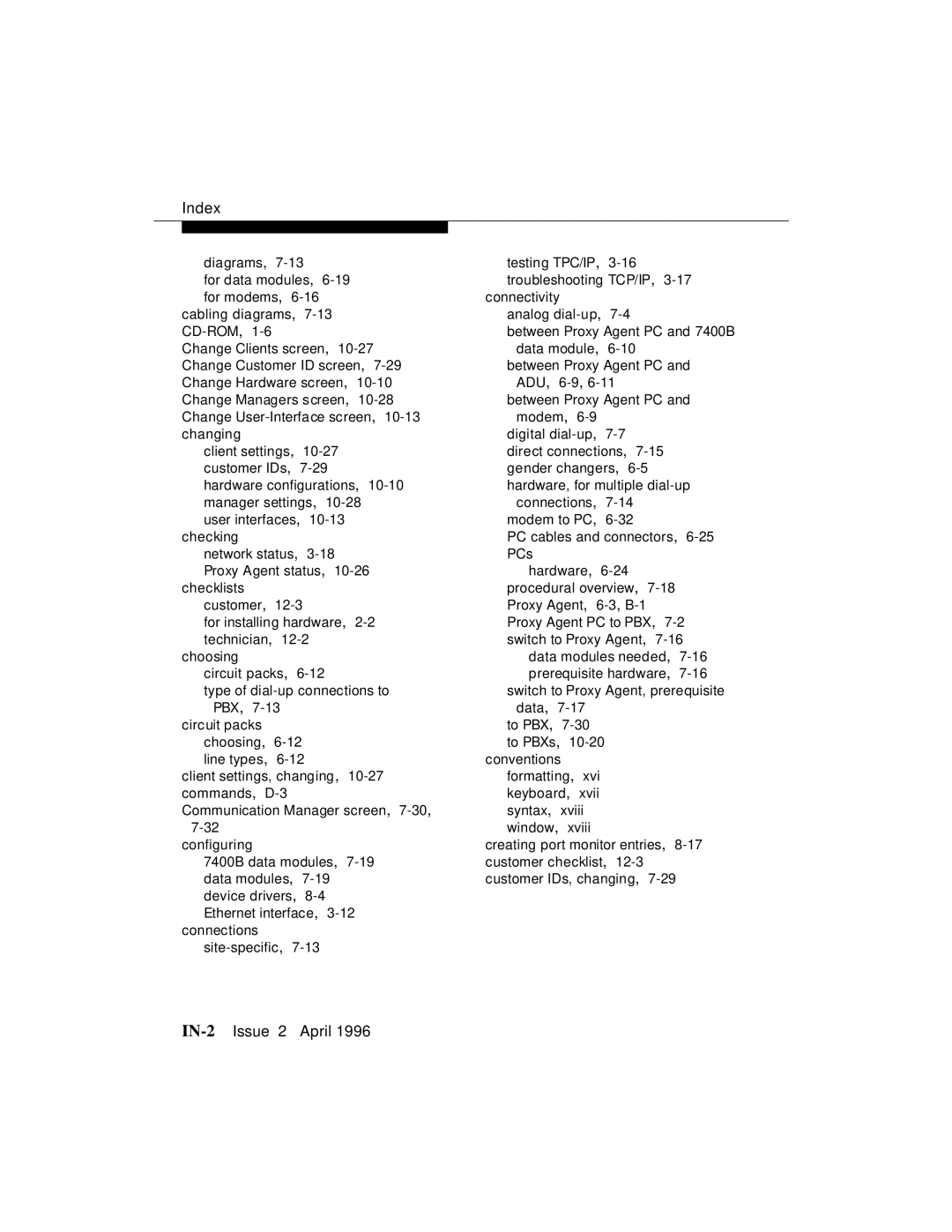diagrams, 7-13
for data modules, 6-19 for modems, 6-16
cabling diagrams, 7-13 CD-ROM,1-6
Change Clients screen, 10-27 Change Customer ID screen, 7-29 Change Hardware screen, 10-10 Change Managers screen, 10-28 Change User-Interface screen, 10-13 changing
client settings, 10-27 customer IDs, 7-29 hardware configurations, 10-10 manager settings, 10-28
user interfaces, 10-13 checking
network status, 3-18 Proxy Agent status, 10-26
checklists customer, 12-3
for installing hardware, 2-2 technician, 12-2
choosing
circuit packs, 6-12
type of dial-up connections to PBX, 7-13
circuit packs choosing, 6-12 line types, 6-12
client settings, changing, 10-27 commands, D-3
Communication Manager screen, 7-30,7-32
configuring
7400B data modules, 7-19 data modules, 7-19 device drivers, 8-4 Ethernet interface, 3-12
connections site-specific,7-13
testing TPC/IP, 3-16 troubleshooting TCP/IP, 3-17
connectivity
analog dial-up,7-4
between Proxy Agent PC and 7400B data module, 6-10
between Proxy Agent PC and ADU, 6-9,6-11
between Proxy Agent PC and modem, 6-9
digital dial-up,7-7 direct connections, 7-15 gender changers, 6-5 hardware, for multiple dial-up
connections, 7-14 modem to PC, 6-32
PC cables and connectors, 6-25 PCs
hardware, 6-24 procedural overview, 7-18 Proxy Agent, 6-3,B-1 Proxy Agent PC to PBX, 7-2 switch to Proxy Agent, 7-16
data modules needed, 7-16 prerequisite hardware, 7-16 switch to Proxy Agent, prerequisite
data, 7-17 to PBX, 7-30 to PBXs, 10-20
conventions formatting, xvi keyboard, xvii syntax, xviii window, xviii
creating port monitor entries, 8-17 customer checklist, 12-3 customer IDs, changing, 7-29
